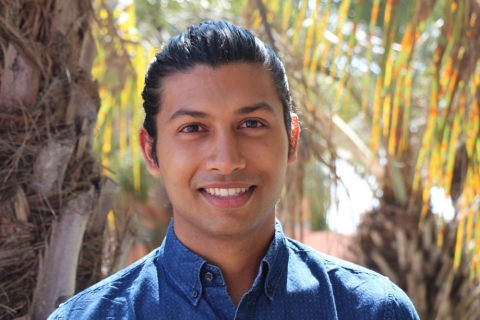
Date:
Location:
Speaker:
Title: Continuum transport through swollen homogeneous polymer membranes
Abstract
The understanding of solvent and solute transport mechanisms within swollen homogeneous polymer membranes remains a subject of ongoing debate in membrane science. With these membranes finding increased applications in organic solvent separations, antifouling coatings, and various biological systems and sensors, a deeper comprehension of continuum transport mechanisms is crucial for material characterization and design.
Classically, two models describe solvent transport within these membranes. The pore-flow model, based on fluid mechanics, works for porous membranes, whereas the solution-diffusion model invokes molecular diffusion to treat nonporous membranes. While both models offer valid arguments for swollen polymer membranes, they diverge in their predictions of intramembrane pressure and concentration profiles.
In the first part of this work, we introduce the fluid-solid model, a novel two-phase mechanics model that treats the solvent and membrane matrix as distinct phases, and determines the forces they apply on each other. This novel approach finds both classical models to be valid, to represent complementary approaches to the same phenomenon, and to make identical predictions. This model aligns with recent reverse osmosis measurements, offers a predictive basis for empirical high-pressure limiting flux phenomena, quantitatively agrees with classic measurements, and introduces a framework to analyze nonporous but mechanically heterogeneous membrane materials. Significantly, it identifies the longitudinal osmotic modulus as a critical mechanical parameter dictating swollen nonporous membrane transport.
The second part of this work involves an experimental exploration of the diffusive mechanics of small neutral solutes within hydrophilic neutral swollen membranes. Leveraging microfluidic interferometry, we investigate the diffusion of methanol, ethanol, and isopropanol in polyethylene glycol diacrylate hydrogels. This optical technique enables the measurement of dynamic diffusive concentration gradients within hydrogels, allowing for a discrimination between diffusive mechanisms and commonly used models of gel diffusion. Six diffusion models, categorized by their mechanism (obstruction, hydrodynamic, and free volume) are fitted to the data, with the Lustig and Peppas free-volume model emerging as the most accurate description. This approach simplifies the diffusion of the solute to the probability of a molecule finding an interstitial space within the sea of solute molecules that is large enough to accommodate the solute and close enough for it to make a diffusive jump. However, it exhibits limitations for isopropanol and ethanol at increasing concentrations, attributed to changes in alcohol-water structuring and the formation of alcohol clusters within the fluid phase.



